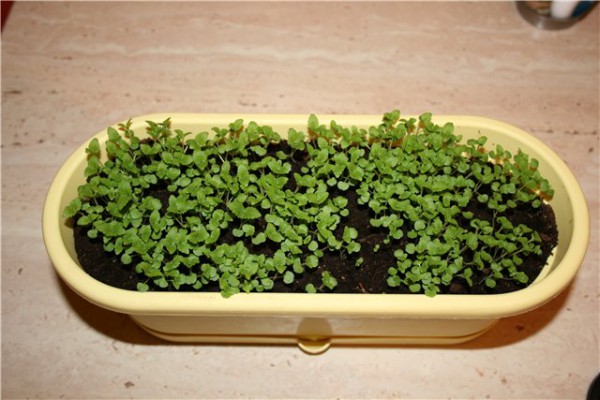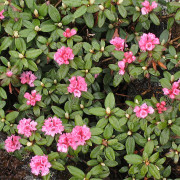Melissa lemon - growing from seeds in the country
Lemon balm has been successfully used in folk and scientific medicine for more than 2000 years, it is well known to the culinary experts of the world. In the kitchen, the mother liquor is an indispensable seasoning. The plant is unpretentious in care, grows well on the windowsill, in the garden, in the wild. The culture is not picky about the soil, it allows you to leave the planting site unchanged for 6 years.
Lemon melissa
Melissa indoor is a perennial herb common in European, Asian, American and African countries. The second name of the plant "mother plant" comes from the Greek word Μέλισσα - "honey bee". The composition of lemon balm (lemongrass) is rich in vitamins B and C, tannins. Lemon bush is called for its rich citrus aroma, due to the content of essential oils in the leaves.
What lemon balm looks like
Lemon mint (medicinal lemon balm) belongs to the Lamiaceae family. The plant grows up to 30-150 cm. The stem has 4-hedrons with petiolate leaves in the shape of a heart. On the edges of the leaves are teeth. Lemongrass inflorescences are small, lilac, white, light pink tones.
Other varieties
Among the popular varieties of lemon balm, a special place is occupied by the Erfurt erect and Quedlinburg creeping grass. New varieties are also worthy of attention of gardeners:
- Dozya. The rosette of leaves is slightly raised, reaching a height of 80 cm. The color is dark green, the outer surface of the leaves is wrinkled. Small white flowers.
- Pearl. The height of the bush is 100 cm, the leaves are slightly raised, there are 25–70 shoots. The color range is dark green, there is no wax coating. In the description of the variety, increased resistance to adverse conditions is noted.
- Isidora. Leaf rosettes are horizontal, 70 cm long. Greens are ovoid, green, slightly wrinkled. Inflorescences are small, white.
- Quadrille. Shrubs of medium size are raised, the number of shoots is a maximum of 15. Leaves are green, flowers are small, differs from lemon balm in its light lilac shades.
- Lemon scent. The type of mead is half raised, height 60 cm. The foliage is ovoid, dark green, has a slight waxy coating.
Medicinal properties of lemon balm
Melissa normalizes blood pressure, breathing and heart rate. Herbalists note diaphoretic, sedative, antifungal and bactericidal effects. Antispasmodic, astringent, diuretic, choleretic, anti-inflammatory, analgesic effect is also inherent in lemongrass.
The medicinal plant has a beneficial effect on the nervous system, increases salivation, metabolic processes. Stimulates digestion, renews lymph and blood, helps to overcome migraines.
Herbal mother liquor treats nervous, cardiovascular, gastrointestinal diseases. Used for bloating, constipation, flatulence. Gout, anemia, gum disease, dizziness, tinnitus, and general weakness can also be helped by lemon balm.
The beneficial ingredients have made lemon balm a weight loss aid. Herbal tea improves metabolism, removes excess moisture and creates a laxative effect.The plant's soothing and antispasmodic properties are beneficial for dieting.
Mint and lemon balm - differences
Both plants belong to the same family, they have leaves of bushes of the same shape. Unlike peppermint, lemon balm has a more branched stem. In the first case, the flowers are collected in a spikelet, the mead has false rings. There are differences in the aroma as well. There are fewer essential oils in the mother liquor.
Lemon balm: growing from seeds
Melissa is considered a frost-resistant crop, it will be possible to grow the plant even in autumn - it will take root well in open soil. Lemon balm seeds are easy to collect on your own or buy ready-made in a package.
Lemon balm is planted at any convenient time - there are no clear restrictions. More often lemon mint is sown in spring, less often in summer or autumn. There is no particular difference in germination.
Mint and lemon balm seeds
Lemon balm when grown from seeds is characterized by a germination rate of 60%. The planting material may be small in size. The seeds are protected with a dense, smooth crust; it is advisable to soak the seeds in hot water before planting. Gardeners add a growth stimulant to the water, reducing the germination period by 2 times.
Choosing the best place
Before planting lemon balm and mint in open ground, you should find a place in partial shade. The complete absence of sunlight or an abundance of moisture will destroy the plant. The ideal soil for obtaining a plant from seeds is sandy loam, slightly acidic or neutral.
Step-by-step planting process
It is convenient to sow lemon mint seeds for seedlings in a greenhouse. In late or mid-March, seed boxes or small glasses should be prepared.
How to plant mint and lemon balm, step-by-step instructions will help you figure it out:
- The seeds are soaked in warm water for a day. The floating seeds are removed and removed.
- Pits 2-3 cm deep are formed in the soil and watered.
- The seeds are sown in the formed grooves. Sprinkle them lightly with soil on top.
- Waiting for the first shoots.
- Thin at a distance of 20 cm.
In the first year, the bushes are strengthened, the second - they bloom and give good greenery.
Lemon balm care
To prevent difficulties in growing lemon balm, simple measures for organizing care will help:
- loosening the soil;
- irrigation;
- elimination of weeds;
- top dressing.
Up to 3 times per season, the culture is cut 10 cm from the soil surface. Bushes quickly recover, become more luxuriant, form new branches. For the winter, it is advisable to cut lemon balm, leaving 2 cm.
The earth is loosened, moistened and covered with fallen leaves. Once every three years, the grass is divided, otherwise the leaves turn out to be small, the lemon taste and aroma of the culture disappear.
Watering mode
On hot days, lemon balm is watered 3-4 times a week, in cloudy weather 2 times are enough. In order to avoid decay of the roots, after watering or rain, the ground must be loosened.
Top dressing
As the seedlings reach a height of 5–6 cm in open soil, gardeners feed lemon balm with nitrogen compounds, stimulating the growth and strengthening of the stem. When pruning leaves for the season, you should use a complex of mineral fertilizers. Mulching the beds with humus or compost will have a beneficial effect on crop growth.
When to collect mint and lemon balm
Harvesting lemon mint is determined by the method of application. For the preparation of a spice, a medicinal plant, a tea ingredient, leaves and stems of a plant, saturated with useful trace elements and essential oils, are suitable. Harvesting is recommended before the flowering of the honey plant, from the second half of spring to mid-summer. Melissa blooms in July. The herb is harvested in the evening, it is important to ensure that the sun's exposure to the plant is minimized. After flowering, mead is used as decoration or oil collection.
Due to the simplicity of cultivation and care, connoisseurs of refined spices and gardeners, who have decided to diversify the collection of herbaceous crops, plant lemon balm in the open field, on the windowsill.




















